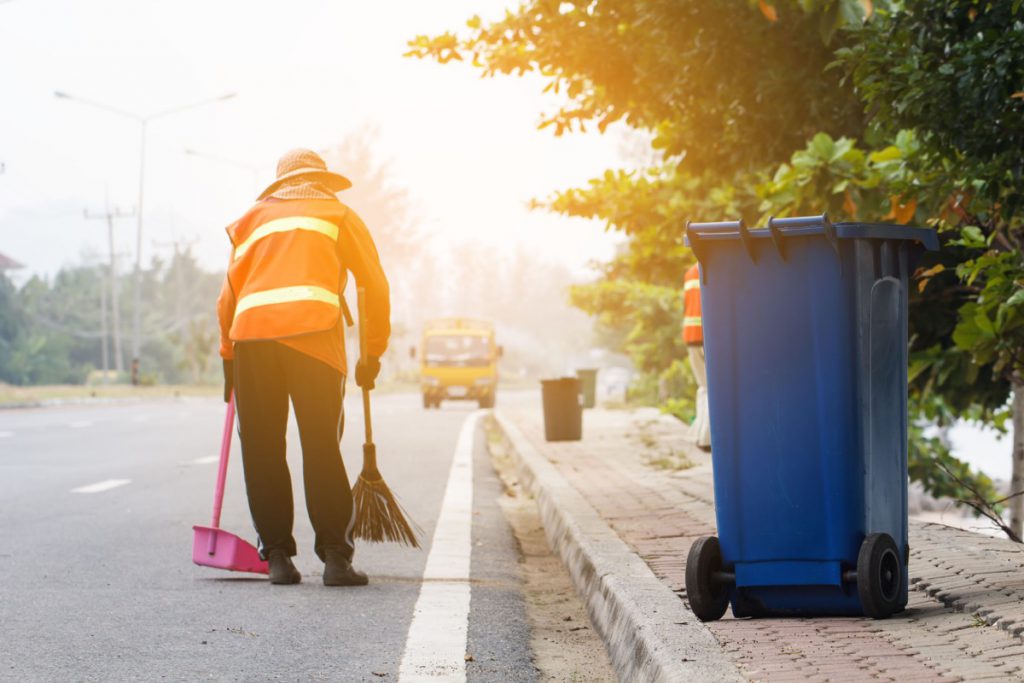Why Are Many Essential Workers Treated as Disposable?

Ken Green
CEO/Founder
UnionTrack
Shelter in place and similar shutdown orders have shuttered business locations throughout the United States in an attempt to slow the spread of the novel coronavirus. To keep vital services running, such orders distinguish between essential and non-essential workers. Essential workers stay on the job; non-essential workers stay home.
Essential workers do in fact provide vital services, like healthcare, sanitation and delivery. By distinguishing between essential and non-essential services, however, shelter in place orders have laid bare a longstanding class division among American workers. Those who do essential tasks often do them in close contact with other humans — and without the pay, healthcare or personal protective equipment (PPE) needed to stay safe.
Who’s Essential?
The category “essential workers” may include 34 to 43 percent of all U.S. workers, or about 49 million to 62 million people, as Adie Tomer and Joseph W. Kane at Brookings estimate.
Not all of these workers have to be in close contact with others or work in public places — but a substantial number of them do. A study by Richard Florida and Todd Gabe found that “between 35 million and 40 million US workers, roughly 3 in 10, do high-risk jobs that involve high physical proximity to their co-workers and close interaction with the people they serve.” Of these high-risk jobs, 75 percent are low-wage service or blue-collar positions.
Tomer and Kane note that “while some of these workers earn competitive wages, many are employed in industries that pay below the national median ($18.58 per hour), ranging from food and beverage stores to nursing care facilities.”
The Essential Worker Gender Gap
Currently, 52 percent of all essential workers are women, Campbell Robertson and Robert Gebeloff at The New York Times write. In social work, healthcare and critical retail, the percentages are even higher: 78 percent, 77 percent and 53 percent, respectively.
Within these fields, women come into close contact with other individuals at a higher rate as well. “Women make up nearly nine out of 10 nurses and nursing assistants, most respiratory therapists, a majority of pharmacists and an overwhelming majority of pharmacy aides and technicians,” Robertson and Gebeloff write. “More than two-thirds of the workers at grocery store checkouts and fast food counters are women.”

Protections for Essential Workers Continue to Fall Short
While millions of workers remain in high-risk jobs because those jobs are essential, they do so without the support and protections they need to avoid falling sick. This lack of support for essential workers represents a significant vulnerability in our response to the novel coronavirus.
Paid Sick Leave Remains Out of Reach
Essential workers often face an increased workload in addition to increased risk from exposure to COVID-19. The ability to take time off when sick in order to avoid spreading the disease, or to care for a sick family member, is a key factor in virus control and in protecting essential workers’ ability to keep doing their jobs. Yet many essential workers have no paid sick leave.
“We find that 55% of workers at large service-sector firms have no paid sick leave, and women are significantly less likely to have paid sick leave than their male co-workers,” write Berkeley researchers Daniel Schneider and Kristen Harknett. “Workers who lack sick leave are very financially insecure —a quarter struggle to pay their bills and a third experienced hunger hardship even before the COVID-19 outbreak.”
The lack of paid sick leave is even more troublesome when many essential workers cannot afford to miss even one paycheck. A study by Audrey Kearney and Cailey Muñana at the Kaiser Family Foundation found that essential workers who must work outside the home are more likely to have a household income below $40,000. One in four report that they struggle to cover basic household expenses like utilities, the rent or mortgage, or food. In this situation, taking sick leave to quarantine in response to a household COVID-19 infection is not an option.
Precarious Health May Increase Risk
A March 2020 study published in the Journal of Infectious Diseases by Jing Yang and fellow researchers examined 46,000 cases of coronavirus infection. The researchers found that when a patient had an underlying health condition, their chances of experiencing severe COVID-19 symptoms increased by two or more times.
A CDC report found similar patterns among U.S. patients. The CDC report estimates that COVID-19 patients with one or more underlying health conditions were more likely to require hospitalization. Underlying conditions that appeared most frequently in hospitalized coronavirus patients included diabetes, chronic lung disease and cardiovascular disease.
“These preliminary findings suggest that in the United States, persons with underlying health conditions or other recognized risk factors for severe outcomes from respiratory infections appear to be at a higher risk for severe disease from COVID-19 than are persons without these conditions,” the CDC noted.
Older adults are statistically more likely to have one or more underlying health conditions, and their participation in the workforce has been increasing in recent years, Mitra Toossi and Elka Torpey at the Bureau of Labor Statistics write.
In Ohio, for example, more than 350,000 workers are older than 65, and “some of the jobs held by older Ohio workers cannot be done easily at home,” Cornelius Frolik at the Dayton Daily News writes. These include essential jobs in grocery stores, food service and similar businesses.

Keeping Essential Workers Safe and Healthy
Unions play a key role in protecting essential workers. In many areas of the country, unions are already organizing to help workers get PPE, protection from firing if they’re sick and other protections.
For instance, in late April, leaders of more than 30 union locals and worker groups in Philadelphia called on the state to do more to support essential workers, Juliana Feliciano Reyes at The Philadelphia Inquirer reports. These groups sought coronavirus testing for all essential workers, as well as legislation prohibiting employers from firing essential workers who opted to stay home if they felt sick, Reyes writes.
Meanwhile, many workers nationwide are organizing with or without unions. “Since the outbreak of COVID, workers have been protesting decisions made by their employers to stay open, refusing to go to work, fighting back or walking out of their work as a response to insufficient worker protections and pay — the perfect opportunity for unions to establish credibility in support of workers,” Micaela Brinsley at Ms. Magazine writes.
Unions have vital work to do in extending sick leave protections beyond the short-term needs of pandemic workers, as well. For instance, Schneider and Harknett point to unions as one factor, along with legislation and corporate strategies, resulting in 81 percent of California workers reporting that they can access paid sick leave. Even in California, however, workers may not have enough sick leave to handle COVID-19, leaving unions and other organizing groups with more work to do.
Millions of Americans go to work every day to keep the nation running and its population safe and healthy. Yet many do so without protective equipment, paid sick leave, adequate pay or access to the healthcare they need to treat underlying conditions that make them more susceptible to the virus.
These shortcomings imperil our nationwide response to COVID-19. Ultimately, they risk not only workers’ lives, but the lives and welfare of everyone who depends upon those workers. Unions have a key role to play in protecting essential workers at a crucial moment.
Images by: Chairak/©123RF.com, kzenon/©123RF.com, Cathy Yeulet/©123RF.com







